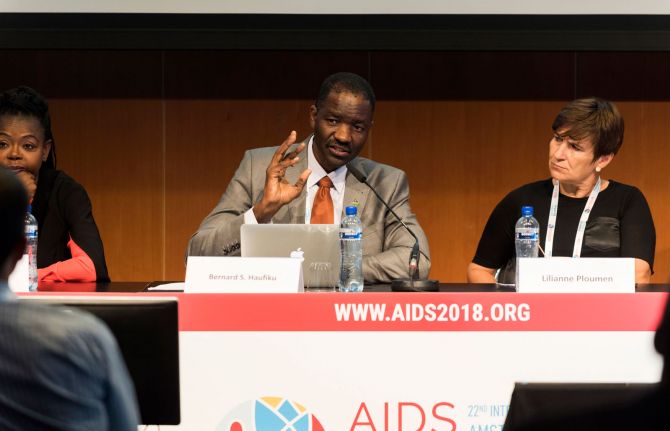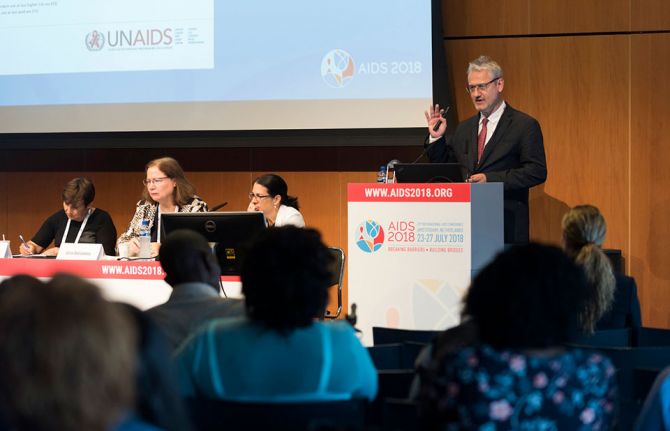




Update
A condom crisis at the centre of the HIV prevention crisis
28 July 2018
28 July 2018 28 July 2018HIV and other sexually transmitted infections and unintended pregnancies continue to pose a high health burden for millions of people, especially young women and key populations.
Data presented during a session of the 2018 International AIDS Conference, held in Amsterdam, Netherlands, from 23 to 27 July, entitled Condoms 2.0: Reinvigorating Effective Condom Programming in the Era of Epidemic Control, shows that condom promotion has averted an estimated 50 million new HIV infections since the onset of the HIV epidemic. Condom use at last higher-risk sex has increased over the past three decades in most countries across the world and is as high as 80–90% in some countries. Furthermore, in all countries for which data are available, a steady decrease in new adult HIV infections between 2000 and 2016 is associated with steady increases and high levels (more than 60%) of condom use by both men and women at last sex with a non-regular partner and condom use by men at last paid sex.
However, 30 years into the response to HIV and despite the increased use of condoms over the past three decades, condom availability and use gaps remain, in particular in sub-Saharan Africa, where the gap between availably and need is estimated to be more than 3 billion condoms. The estimated condom need in 47 countries in sub-Saharan Africa in 2015 was 6 billion male condoms; however, only an estimated 2.7 billion condoms were distributed.
The participants highlighted the many barriers and inequities hindering access to, and the use of, condoms that continue to exist, including poor access, age restrictions, gender norms, religious norms, stigma, insufficient supply and, in some places, laws that make it an offence to carry condoms. Many countries also prohibit condom promotion and distribution in schools and other venues where adolescents socialize. According to the participants, of the 100 countries that reported having a national plan or strategy related to condoms in 2017, only 26 reported that the plan included condom promotion in secondary schools.
International funding for condom procurement in sub-Saharan Africa has decreased in recent years, and domestic funding has not sufficiently increased, the participants noted. In several countries condom programming, in particular condom promotion and demand creation, has stalled due to a lack of funding and decreased investment.
During the session, the participants stressed the need for a new generation of comprehensive, data-driven and people-centred condom programmes as part of the delivery of combination HIV prevention and sexual and reproductive health services for people at higher risk of HIV and other sexually transmitted infections and unintended pregnancies.
These new programmes should aim at strengthening demand for and supply of condoms and lubricants and address the barriers and inequities that hinder the demand for and the provision, access and use of condoms by young people, key populations and other people at higher risk of HIV. Furthermore, condom promotion and distribution strategies and approaches need to be informed by data, tailored to the context and needs of different communities.
Lastly, the participants agreed on the need to set up effective multistakeholder condom programming coordination and oversight platforms and ensure the full involvement of beneficiaries and communities in planning, service delivery and monitoring.
Quotes
“There is a condom crisis at the centre of the prevention crisis. We are missing a cost-effective opportunity to maximize the contribution of condoms to reducing HIV infections, other sexually transmitted infections and unintended pregnancies.”
“We need to recapture lost ground. That means do business not as usual.”
“Not even for a million euros I would accept to do it with a client without a condom.”



